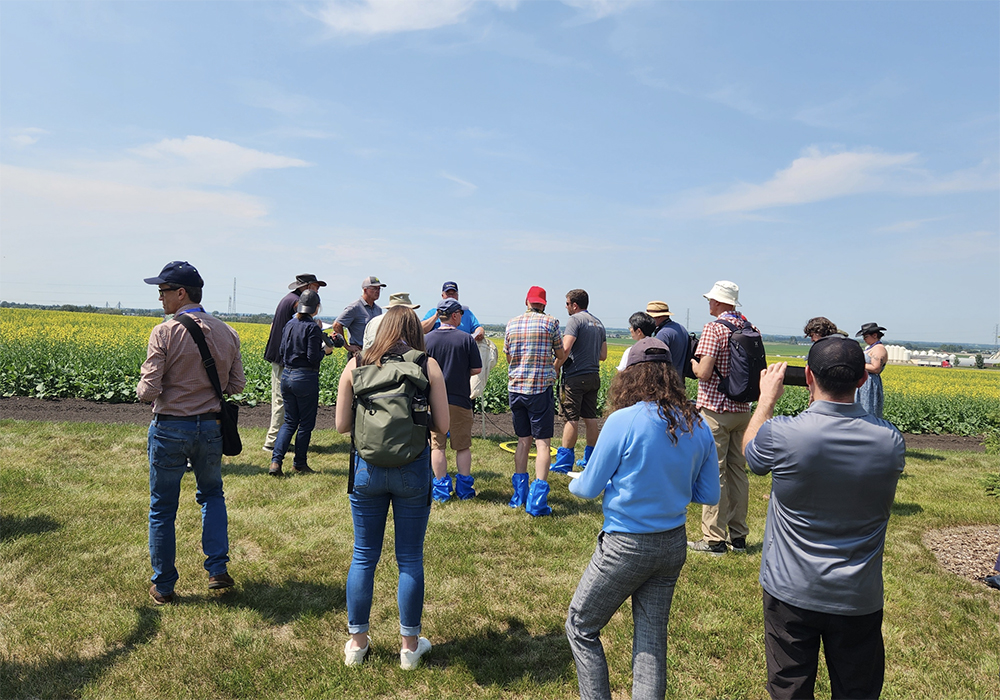The crops south of Olds, Alta., looked terrible. The brutality of the drought was obvious in crops that were raggedly trying to rise above the parched soil.
Many of the fields that a busload of international agricultural journalists were passing were almost certainly going to be writeoffs, leaving the growers who had seeded them to focus on what to seed next year after harvesting/disposing what they had invested so much in just a few weeks ago.
That’s just western Canadian farming. It’s always a crapshoot when growers in this northern fringe of the habitable world put in a crop and hope for good treatment from the weather gods.
Read Also

Exports off to a slow start after last year’s torrid pace
Canadian grain, oilseed and pulse exports are off to a slow start, but there are some bright spots, according to the Canadian Grain Commission’s most recent weekly export data report.
Those gods are unpredictable and often seem malicious, but their unpredictability is predictable and Canadian farmers operate knowing how risky their business is.
Canada and other developed nations have developed risk management systems that help farmers get through these trying times. We tend to take this for granted, but talking to farmers from developing nations can be a wake-up call about what farmers elsewhere face.
Olds hosted the weeklong congress of the International Federation of Agricultural Journalists in the last week of June and the first days of July, bringing in reporters, editors and communicators from more than 20 countries to show off the farming we do here.
It was a chance for me to chat with ag journalists from countries like India and Bangladesh, where farming is profoundly different and faces a profoundly different set of challenges.
Indian agriculture is based on tens of millions of tiny farms on which farming families struggle to produce enough to feed themselves and a surplus they can sell to provide cash to buy everything else they need in life.
Farmers here have a rich media environment of agricultural journalism like this newspaper, as well as company and government publications, radio, podcasts and television they can rely upon to keep them up to date with what they need to know, what’s new in agriculture and the latest in research and science that can help them squeeze out a little more margin from their crops and livestock.
That isn’t the case for millions of Indian farmers, who often have no access to printed materials, who sometimes can’t read and who are distant from centres where knowledge gets distributed. Their access to information and ag journalism is through their smartphones, which most Indian farmers have, upon which they watch videos about production and farm management, I was told by the head of an organization that produces and hosts these sorts of online resources.
In Africa, hundreds of millions of farmers rely upon radio to keep them informed about agriculture, because they often have no access to newspapers, magazines and the internet.
When it comes to farming challenges, there don’t seem to be any regions of this planet that don’t face their own unique bundle of them. A Bangladeshi journalist told me that a major issue in his country is rising sea levels, which are causing ocean water to sporadically saturate coastal farming areas, forcing farmers to deal with salinity they haven’t before experienced.
Everywhere, in every region and environment, farmers are grappling with greater risks and dangers as climate change makes farming even less predictable than it has always been.
For the hundreds of journalists who gathered here in Olds, staying abreast of what’s happening and always being focused upon what farmers need to know is a common commitment. That is no different no matter what country an ag journalist is from. Information, knowledge, analysis and informed opinion is the core of what journalists attempt to provide for their nation’s farmers because that plays a vital role in the ability of farmers to operate, survive and thrive in an increasingly harsh environment.
Canada has a lot to be proud of when it comes to farming and agriculture. That was evident on the bus tours that took journalists from Sweden and Croatia, Australia and Nepal and many other countries around the Alberta foothills and the broad plains that we farm here.
But in a way, those parched fields and drought-stricken farms the buses passed and visited might have been a highlight, underlining the riskiness of the business farmers are in no matter where they farm.
We are blessed in so many ways in this country. But when it comes to farming, no matter where you are, it’s a risky business, and that’s not only never going to change, it’s going to get more intense, and with that we are united with the rest of the farmers on this planet.


















